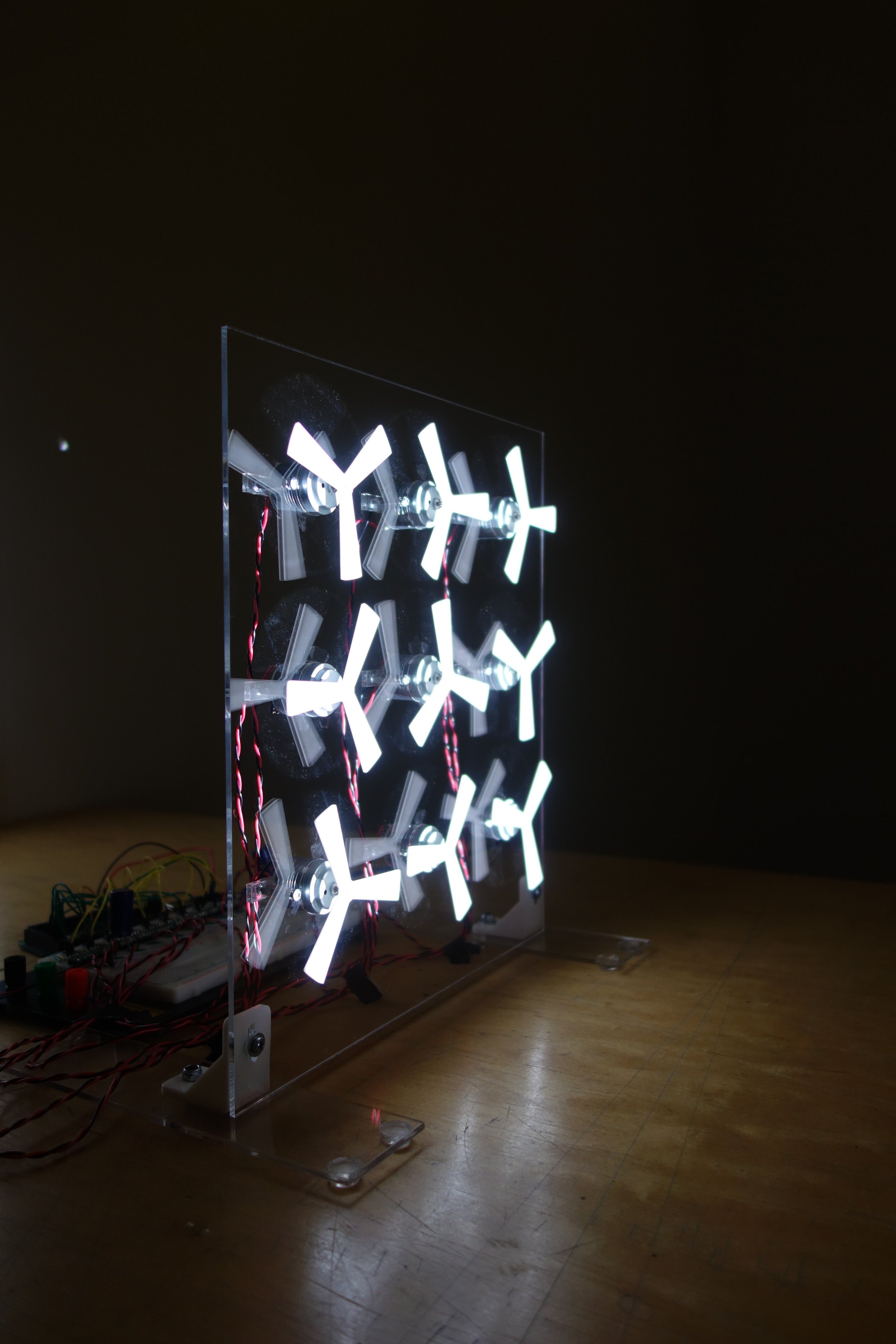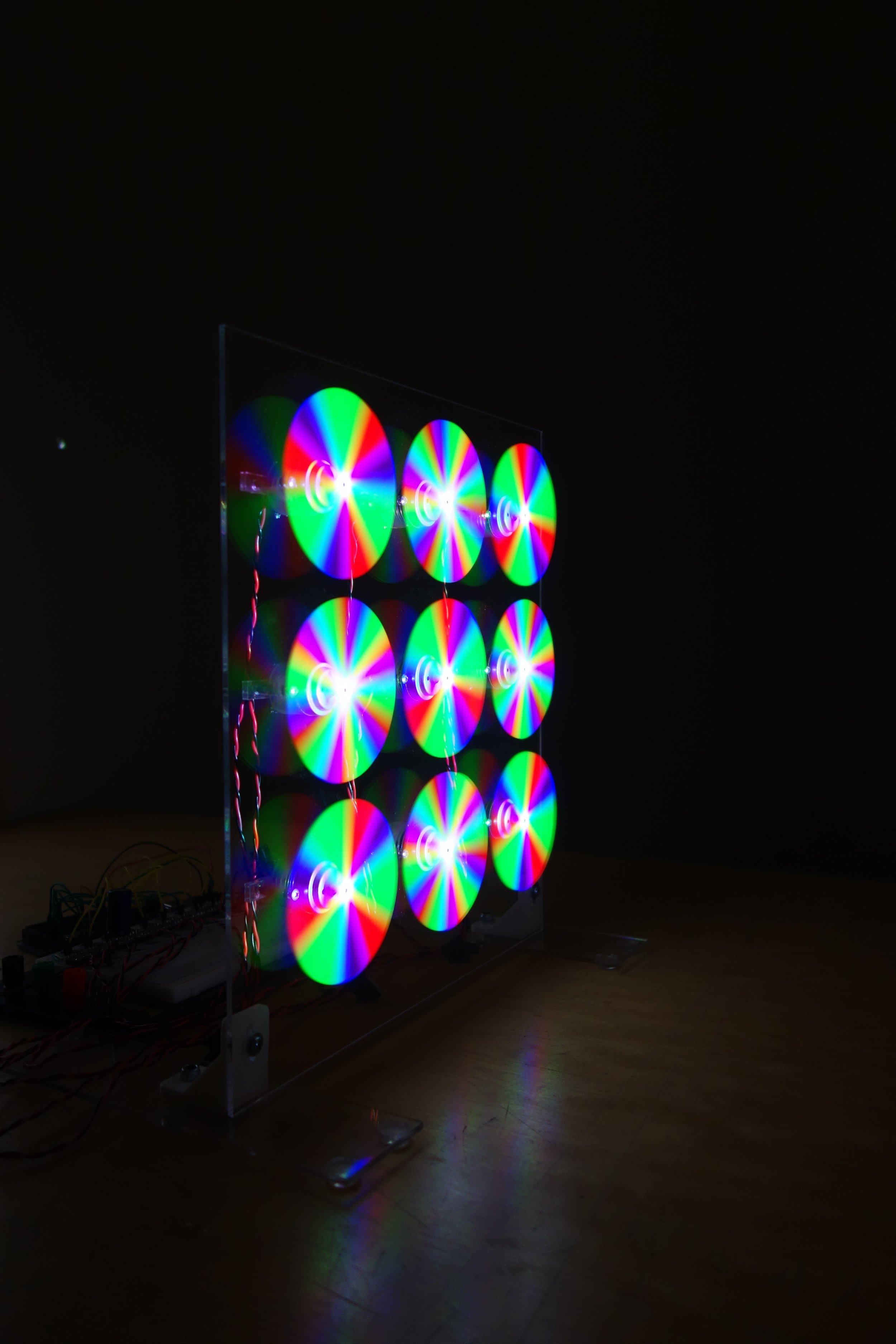Fan Club
Stanford, June 2016
DLP projector, DC motors, 3D-printed fan blades, Arduino, OpenFrameworks Application.
A DLP projector shining (only) white light onto a grid of spinning fans.
In a word, Fan Club is about aliasing.
It takes advantage of the unique technology behind a DLP projector to generate fantastically colorful patterns on a grid of propellers.
Using custom electronics and software, the operator can finely control the speed of each individual propeller, which (see explanation below) also controls the observable color pattern.
The Set-Up:
Fan Club is composed of 3 key components: a DLP projector projecting only bright white (RGB: 255, 255, 255), a matrix of propellers attached to finely-controllable DC motors, and a wall or screen onto which the white light is projected through the propeller matrix.
The following photos show what the set-up looks like while the fans are not spinning.
The Effect:
Once the fans are turned on, magical things happen.
The following three photos show (from left) what the fans look like when they are not spinning, what the spinning fans look like without white being projected onto them, and what the spinning fans look like with the white projected.
In the photo below, notice how the colors on the propellers are red, green, and blue, but the colors on the wall behind the projectors are cyan, magenta, and yellow.
How It Works:
Fan Club takes advantage of how a DLP projector works.
Each standard DLP projector is a pretty crazy piece of technology. The diagram below illustrates how they work.
A light source is channeled through a color filter (also called a color wheel) which traditionally has three different dichroic color filters: red, green, and blue. The color wheel spins very, very quickly. Light passes through it onto a grid of tiny mirrors. These mirrors (there are the same number of them as there are pixels of resolution on the projector) either reflect the red, green, or blue light through the projecting lens, or not.
The fans in Fan Club are synchronized to the same rotational speed as the color wheel, allowing them to 'catch' different, seemingly stationary segments of color.
Below is a video that shows different patterns emerging as a fan's speed is reduced from ~7000RPM (the speed of the color wheel) to 0RPM.
Decreasing the RPM of an individual fan from 7000 to 0. Notice all the different patterns that appear at various speeds.





